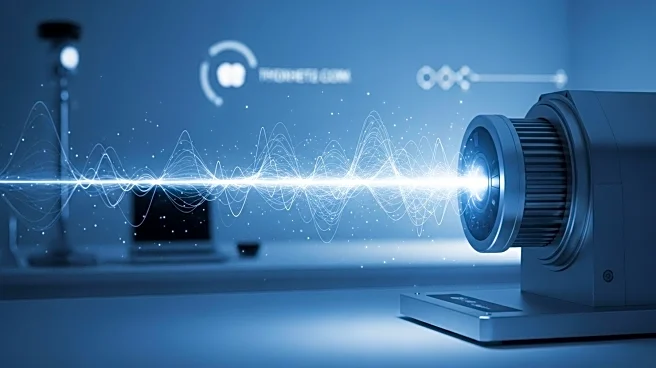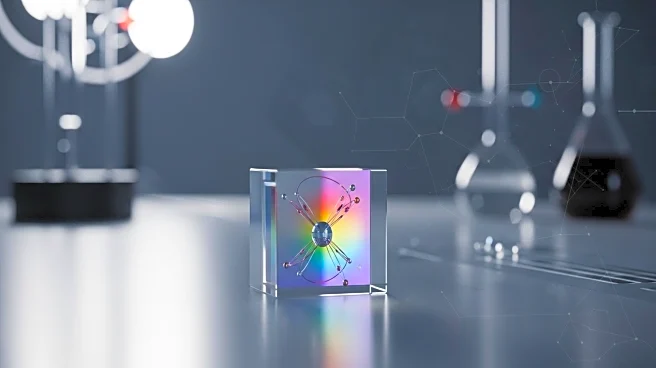What's Happening?
Recent research has focused on manipulating terahertz phonon-polaritons within hybrid metasurfaces composed of gold (Au) and MAPbI3 film. The study explores the ultrastrong coupling regime using bound states in the continuum (BICs) theory. The hybrid system, featuring asymmetric C-shaped Au SRR pairs, generates new electromagnetic modes, one of which exhibits zero radiation loss, known as BIC. The coupling between BICs and phonons is enhanced by tuning the resonance position through geometric scaling, resulting in significant Rabi splitting. The research demonstrates that the coupling strength in Au-MAPbI3 hybrid metasurfaces meets the criteria for strong coupling, with experimental results aligning well with theoretical predictions.
Why It's Important?
This research is significant as it advances the understanding of light-matter interactions in hybrid metasurfaces, potentially leading to improved photonic devices. The ability to manipulate phonon-polaritons and achieve strong coupling can enhance field localization and modify dispersion characteristics, which are crucial for developing efficient memory devices and secure communication systems. The findings could impact industries focused on photonics and quantum technologies, offering new avenues for innovation in electronic and optical applications.
What's Next?
Future research may focus on further optimizing the coupling strength and exploring additional coupling mechanisms beyond the initial model. The study suggests that incorporating dual-phonon perovskite oscillator parameters could yield more accurate predictions and enhance the system's performance. Continued exploration of phonon-polariton systems could lead to breakthroughs in terahertz technology and its applications in various fields, including telecommunications and quantum computing.
Beyond the Headlines
The study highlights the potential for manipulating phonon-polaritons to achieve ultrastrong coupling, which could revolutionize the design of photonic devices. The research underscores the importance of geometric scaling in tuning coupling strength, offering insights into the coherent coupling mechanisms inherent in phonon-polariton systems. This could lead to long-term shifts in how electronic and optical devices are designed and manufactured, emphasizing the role of advanced materials and hybrid systems.










